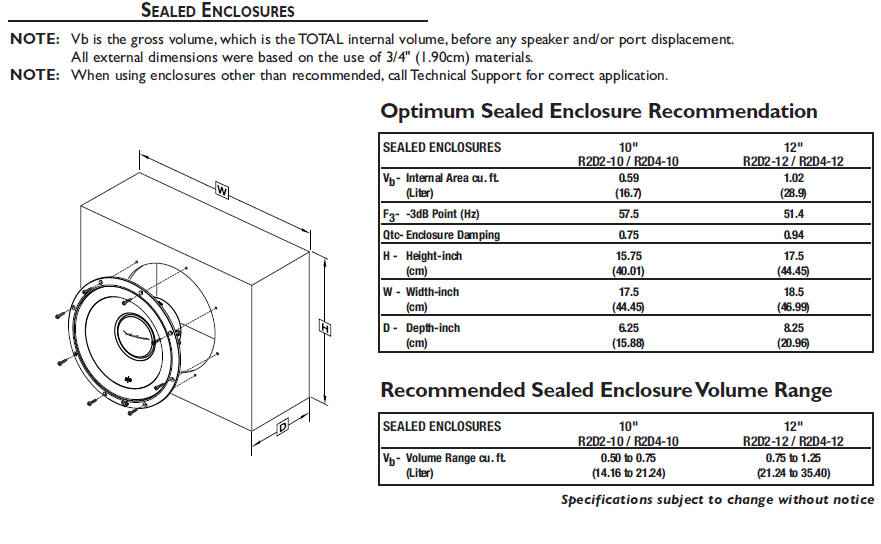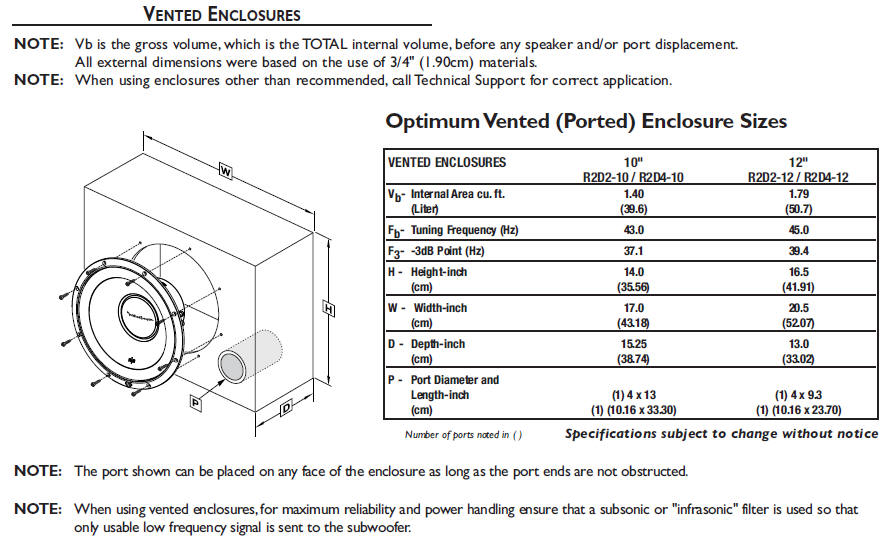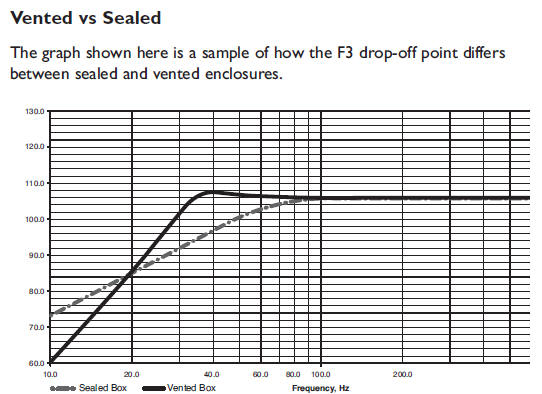Rockford Fosgate subwoofer Speaker Box enclosure design diy how to building
sub woofer box
projects loudspeaker plans
Rockford fosgate Subwofer speaker box
10"
12"
Dual 2-Ohm
R2D2-10 R2D2-12
Dual 4-Ohm
R2D4-10 R2D4-12


Rockford Fosgate SUBWOOFER CROSSOVERS
There are two operational types of crossovers, passive and active.
Passive crossovers (coils or inductors) are placed on the speaker
leads between the amplifier and speaker.An active crossover is an
electronic filter that separates the audio signal fed to different
amplifiers. For optimum subwoofer performance, we recommend
using an active 80-100Hz low-pass crossover at 12dB/octave.

SEALED ENCLOSURES
Sealed enclosures are the simplest to build.The most important part of
building a sealed enclosure is to make sure that the enclosure is
airtight.
Using glue and some type of sealant on all seams will ensure solid
construction and prevent air leaks.The box volume will directly impact
the performance of the speaker. Larger enclosures will provide flatter
response and deeper bass where smaller boxes will provide a bump in
the response curve and generally higher output for greater SPL.
Advantages of sealed enclosures:
• Small enclosures
• Linear (Flat) response
• No port noise
• High power handling at all frequencies
• Excellent for sound quality
• Extended low frequency output when compared to vented enclosures
VENTED ENCLOSURES
Vented enclosures vary only from the sealed enclosure in that a vent or
port is added to “tune” the enclosure.The enclosures recommended are
designed for great overall performance. Larger boxes tend to be easy to
tune to lower frequencies while medium and small boxes are easier to
tune to higher frequencies.The vented design is less linear in response
than the sealed box but with noticeably more output at the tuning
frequency.
Advantages of vented enclosures:
• Higher average output than sealed
• Tuning frequency can be easily adjusted by changing port length
• Deep bass response with lower power requirements
• Great for high output with limited power
BUILDING AN ENCLOSURE
To work properly, the walls of the enclosure must be rigid and not flex
when subjected to the high pressures generated by the speaker's
operation. For optimum performance, we recommend using 3/4" MDF
(Medium Density Fiberboard) and internal bracing.The enclosure should
be glued together and secured with nails or screws.
|